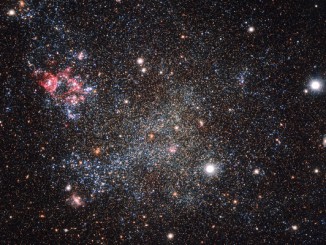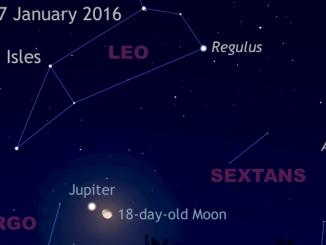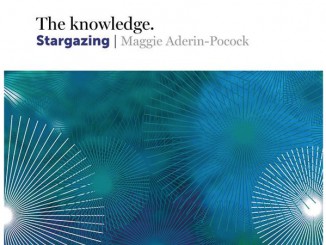
Archive


Moon was produced by head-on collision between Earth and forming planet
The Moon was formed by a violent, head-on collision between the early Earth and a “planetary embryo” called Theia (pronounced THAY-eh) approximately 100 million years after the Earth formed, UCLA scientists reveal. This new research also refutes the work of a team of German scientists who, in 2014, reported that the Moon also has its own unique ratio of oxygen isotopes, different from Earth’s.

Monstrous “Smith Cloud” boomerangs back to the Milky Way
New Hubble observations suggest that an immense cloud of hydrogen gas was launched from the outer regions of the galactic disc around 70 million years ago and is plummeting back toward our galaxy at nearly 700,000 miles per hour. If this so-called “Smith Cloud” could be seen in visible light, it would span the sky with an apparent diameter 30 times greater than the size of the full Moon.

Globular clusters make new stars by ‘adopting’ stray cosmic gases
An international research team of astronomers has, for the first time, found young populations of stars within globular clusters that have apparently developed courtesy of star-forming gas flowing in from outside of the clusters themselves. This method stands in contrast to the conventional idea of the clusters’ initial stars shedding gas as they age in order to spark future rounds of star birth.

The Milky Way’s clean and tidy galactic neighbour
Many galaxies are chock-full of dust, while others have occasional dark streaks of opaque cosmic soot swirling in amongst their gas and stars. However, the irregular dwarf galaxy IC 1613 contains very little cosmic dust, allowing astronomers to explore its contents with great clarity. This is not just a matter of appearances; the galaxy’s cleanliness is vital to our understanding of the universe around us.

See the Moon’s close brush with Jupiter on the night of 27—28 January
Observers in the British Isles and western Europe with a clear sky low to the east around 10pm local time on Wednesday, 27 January can see the rising 18-day-old waning gibbous Moon in a close conjunction with Jupiter, the solar system’s largest planet. Jupiter draws steadily closer to Earth and grows in apparent size over the coming weeks.

Space-Earth system produces highest-resolution astronomical image
Using an orbiting radio-astronomy satellite combined with 15 ground-based radio telescopes, astronomers have made the most-detailed astronomical image yet, revealing new insights about a gorging black hole in a galaxy 900 million light-years away. The image has the resolving power of a telescope about 62,500 miles wide, or almost eight times the diameter of the Earth.

Galaxy clusters reveal new dark matter insights
Galaxy clusters, which consist of thousands of galaxies, are important for exploring dark matter because they reside in a region where such matter is much denser than average. Scientists believe that the heavier a cluster is, the more dark matter it has in its environment. But new research suggests the connection is more complicated than that.

The Knowledge. Stargazing
Maggie Aderin-Pocock’s book runs the gamut of astronomy’s origins, classes of celestial objects, their appearance and how amateur and professional astronomers study them in ten easily digestible chapters. “Not so much a beginners’ guide; more a taster … I feel that unappeased appetites will soon be searching for richer meat,” says reviewer Steve Ringwood.

Go, Flight! The Unsung Heroes of Mission Control, 1965-1992
Scores of brave Major Toms have been fired into space atop the most powerful rockets known to man, yet the responsibility for getting them there — and back — rested with the mission controllers in Houston. “Unsung heroes? Heroes, certainly. But after this firecracker of a book, no longer unsung,” says reviewer Andy Sawers.
